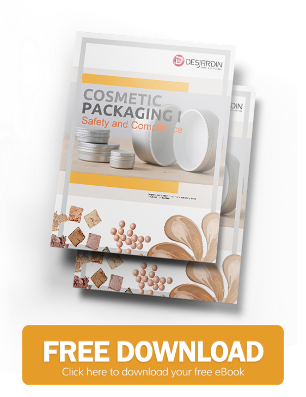The United States Congress passed a set of laws known as the Federal Food, Drug and Cosmetic Act (FD&C) in 1938. FD&C gave the Food and Drug Administration (FDA) the authority to oversee the safety of food, drugs and cosmetic products. The impetus behind passing the FD&C Act was to prevent tragedies, such as the instance of more than 100 patients dying as a result of using diethylene glycol to dissolve a sulfanilamide medication to be used in a liquid form from reoccurring.
Over the years, the FD&C Act has been updated numerous times to reflect new findings about the safety of various ingredients and effectiveness of previously marketed pharmaceuticals. Updates to the FD&C also ensure that manufacturers must properly use packaging that is suitable for food contact and use packaging techniques to keep the public safe. Included in the FD&C are guidelines for FCS and GRAS substances that come into contact with food. These guidelines are followed when creating coatings that are used inside metal packaging, including those made of tin or aluminum.
What is a Food Contact Substance (FCS)?
While the ingredients that are used in the process of creating a food that will require packaging, exposure to certain materials may make it dangerous to eat. Thus, there is a need for oversight on what substances can come into contact with food to protect the public.
Under the FD&C Act, Section 409 defines a Food Contact Substance (FCS) “as any substance that is intended for use as a component of materials used in manufacturing, packing, packaging, transporting, or holding food if such use of the substance is not intended to have any technical effect in such food.”
According to the FD&C, there is a hierarchy that applies to FCS:
- A Food Contact Substance is a singular substance, for example a polymer or a polymer that contains an antioxidant. This substance is considered as a pure substance under the Chemist’s definition of what a substance is. While several monomers might be used to compose a polymer, the composition is still well-defined.
- Food Contact Material (FCM) is produced with the FCS and often, additional substances. It can be a mixture that varies in composition, for example, a polymer that contains an antioxidant.
- From the Food Contact Material (FCA), the finished item that will come into contact with the food item is fabricated. That finished item is referred to as a Food Contact Article and could be a dough hook, finished film, tray, bottle or other type of item that has been made from the FCM.
 What Does the Term GRAS Refer To?
What Does the Term GRAS Refer To?
The term GRAS is an acronym for “Generally Recognized As Safe.” Sections 201(s) and 409 of the FD&C Act defines a GRAS as:
Any substance that is intentionally added to food is a food additive, that is subject to premarket review and approval by FDA, unless the substance is generally recognized, among qualified experts, as having been adequately shown to be safe under the conditions of its intended use, or unless the use of the substance is otherwise excluded from the definition of a food additive.
These substances are differentiated from food additives by way of the information given to support the determination of being GRAS. This information would be generally accepted by the scientific community and would need to be made available to the public. Additionally, the information should be of the same caliber of information that would normally be given to support the safety of a food additive.
Metal Packaging Safety
 Over two centuries ago, tinplate was introduced as material for making food containers. However, food poisoning from ingesting excessive amounts of metals became a common occurrence from foods that were packaged in those containers. Because of this issue, a group of physicians in Germany recommended that the use of tinplate should not be used in making containers for food.
Over two centuries ago, tinplate was introduced as material for making food containers. However, food poisoning from ingesting excessive amounts of metals became a common occurrence from foods that were packaged in those containers. Because of this issue, a group of physicians in Germany recommended that the use of tinplate should not be used in making containers for food.
Today, with improved technology, the quality of tinplate that is used in the making of containers has improved dramatically. Additionally, foods, such as those that are acidic in nature that would normally eat away at tin are packaged in enameled coated tinplate containers. Unlike other elements, such as copper or iron, tin has not been found to be an essential element that is needed the human diet. However, the medical community has concluded that there are no long-term health effects related to the ingestion of trace amounts of tin that might be found in beverages or solid foods packaged in tin containers.
Aluminum is also a nonessential metal in the human diet and has a history of being suitable for food contact. The U.S. FDA has determined aluminum to be GRAS and it can often be found in food ingredients that are used to preserve, color or leaven various foodstuffs. However, aluminum is not used in its pure form as a packaging material, because of the risk of corrosion from certain foods. Instead, to strengthen and reduce corrosion resistance, copper, zinc, iron, chromium or manganese are added to aluminum. Similar to tinplated containers, food-grade aluminum containers are also coated with an enamel on their inner surface to prevent acidic foods or beverages from corroding the metal.
When manufacturing tin and aluminum plates suitable for food contact, Desjardin uses a transparent “food varnish” to prevent any reactions with food ingredients. This varnish has been explicitly approved by the FDA and the EU. In addition, every ingredient needs to be tested before serial production on any possible and unwanted reactivity (e.g., through acidity of the inserted substance).
Disclaimer:
The postings in this blog section do not necessarily represent Desjardin's positions, strategies or opinions.
References and Further Reading
- More posts on Cosmetic Packaging, by Alex Cosper and Dawn M. Turner
- Is It a Cosmetic, a Drug, or Both? (2016), by the U.S. Food and Drug Administration
- Regulation (EC) No ´1223/2009 on Cosmetic Products (2009), The European Parliament the the European Council
- ISO 22715:2006: Cosmetics -- Packaging and labelling (2006), International Organization for Standardization
- 4 Tips for Researching and Finding Wholesale Suppliers (2012), US Small Business Association
- 13 Tips for Negotiating with Suppliers (2012), Inc
- Supplier Selection (2009), Damian Bell








